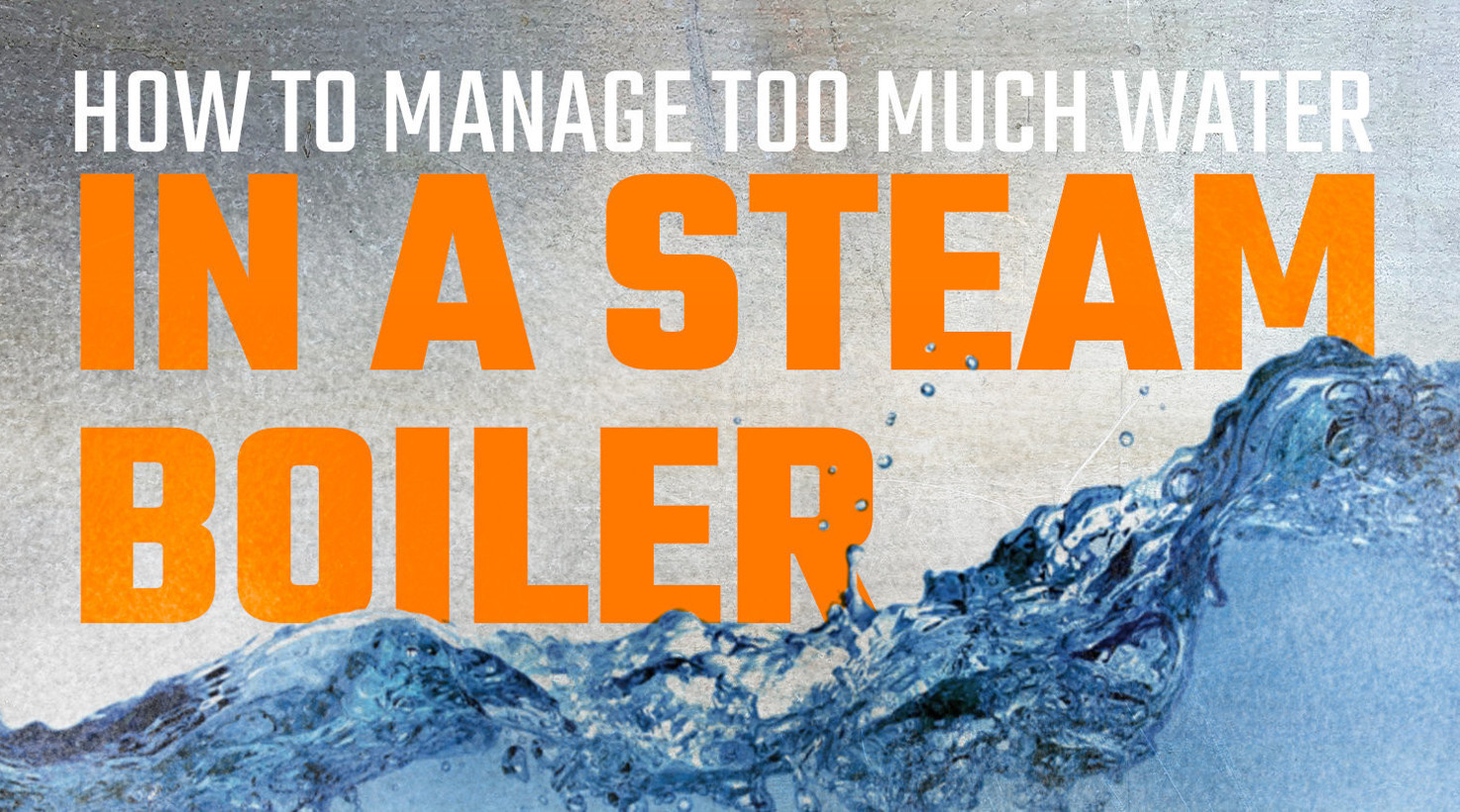TOO MUCH OF A GOOD THING
While water is a boiler’s literal lifeblood, it’s never a case of “more is always better.” The quantity of water in a boiler has to be carefully regulated and periodically adjusted to keep your boiler running safely, efficiently, and in-spec.
THERE ARE LIMITS
When running a boiler, you will lose water over time. That’s what steam’s made of. However, when the water level starts to run low, “add more water, get more steam” only works up to a point. That’s because your boiler is specifically designed to use a certain amount of fuel to make a certain amount of heat to put out a set amount of steam per hour.
Even if you had more water and heat to add, the physical size of your boiler will only let so much energy transfer occur between the fireside and the waterside over a given period of time. You could add three more fuel pumps to your car, but it’s not going to go any faster. In fact, probably the opposite.
GETTING SWAMPED
When you add too much water to a boiler, you actually end up doing more harm than good. First of all, you’re going to lower the temperature inside the boiler. Even though it may have been preheated, that new water that just entered the boiler is always going to be a little cooler than the water already inside.
That’s going to drag the whole room down, bringing more of the water to an overall lower temperature and slowing the production of steam. That’ll increase your fuel usage and hamper your efficiency, because it’s going to take more heat to get all that water back up to working temperatures.
THAT SUCKS
However bad the other consequences of too much water can be, the worst possible outcome from adding too much water is getting water in the steam header. When water is forced out of the header instead of steam, condensate ends up where it’s not supposed to go in your steam system. That could cause catastrophic damage, and take you offline for days or weeks.
TURN DOWN THE VOLUME
If you realize your boiler water level is too high, the simplest fix is to perform a blowdown to get the level back where it’s supposed to be. By draining off the excess water, you’ll create more room for steam, and help make your boiler perform better. After a high water blowdown, it’s best to keep a closer eye on the boiler to make sure that the water level stays where it’s supposed to be. If the water level creeps up again, get a qualified technician to perform an inspection to make sure you don’t have a water leak, or something worse.
If you need service, maintenance, or inspection, WARE’s highly trained and certified technicians will get the job done right. If you’re in the market for a new or rental boiler, we have a huge inventory of all sizes ready to go. And if there’s anything you need in the way of boiler parts or services, or if you’d like to get a deeper understanding of how a boiler operates, WARE is always here to help. Contact us at your convenience.
